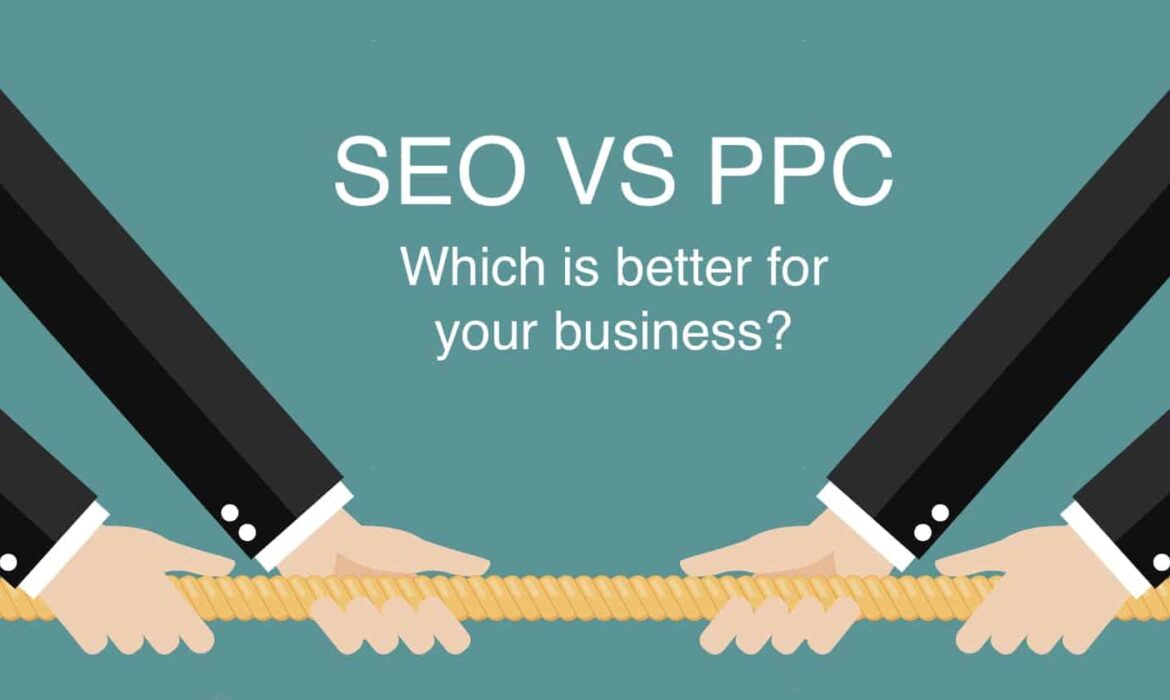SEO vs PPC for E-Commerce: Which One Drives Better Sales?

In today’s fiercely competitive digital marketplace, e-commerce brands are continually striving to drive better sales and maximize their return on investment (ROI). Two primary digital marketing strategies—Search Engine Optimization (SEO) and Pay-Per-Click (PPC) advertising—offer distinct advantages, and understanding which one can deliver the best sales results is critical for long-term growth. In this article, we will compare and contrast SEO and PPC for e-commerce, explore their unique benefits and challenges, and provide actionable insights to help you determine the best strategy or combination of strategies for your brand.
Understanding SEO for E-Commerce Sales
What Is SEO?
Search Engine Optimization (SEO) refers to the process of optimizing your website to rank higher in organic search results. With an effective SEO strategy, e-commerce brands can attract high-quality, organic traffic without having to pay for each click. By targeting relevant keywords such as “organic traffic,” “on-page optimization,” “technical SEO,” and “content marketing,” businesses can ensure that their online presence becomes a magnet for potential customers.
SEO encompasses various components including keyword research, on-page optimization (meta tags, headings, URL structure), content creation, off-page efforts (link building and social signals), and technical aspects such as site speed and mobile responsiveness. Together, these elements create a comprehensive digital presence that enhances credibility and trust among users and search engines alike.
SEO Strategies for E-Commerce
For e-commerce websites, SEO is not just about driving traffic; it’s about converting that traffic into sales. Here are some effective strategies tailored for online retail:
Keyword Research & LSI Keywords:
Identify primary keywords such as “e-commerce SEO,” “SEO for online stores,” and secondary LSI keywords like “search engine marketing,” “organic ranking,” and “customer acquisition.” This helps create content that is relevant and comprehensive, meeting both user intent and search engine algorithms.Content Marketing:
Develop engaging product descriptions, blog posts, and landing pages that not only inform but also entice your audience. High-quality content with targeted keywords, multimedia elements, and clear calls-to-action can drive customer engagement and conversion rates.On-Page and Technical SEO:
Optimize page titles, meta descriptions, and headers while ensuring that your website is fast, mobile-friendly, and secure. A well-organized site structure, intuitive navigation, and schema markup for product listings can boost both user experience and search engine rankings.Link Building & Social Signals:
Earning high-quality backlinks from authoritative websites is essential for improving domain authority. Incorporate guest blogging, influencer collaborations, and digital PR to naturally build your link profile.
Pain Points and Challenges in SEO
While SEO offers long-term benefits, it comes with its own set of challenges:
Time-Intensive Process:
SEO requires significant time to see measurable results. Building authority and ranking for competitive keywords can take months, and ongoing optimization is crucial to sustain performance.Algorithm Changes:
Search engines continually update their algorithms. E-commerce brands need to stay current with these changes to avoid penalties and maintain their rankings.Technical Complexity:
Implementing technical SEO improvements requires expertise and often specialized tools. Issues like duplicate content, broken links, or slow site speed can hinder progress.High Competition:
Many e-commerce companies compete for the same keywords. Standing out requires creativity, extensive market research, and consistent quality improvements.
Solutions to Overcome SEO Challenges
Regular Audits & Updates:
Conduct regular SEO audits to identify and fix issues before they impact your ranking. Use tools like Google Analytics, SEMrush, or Ahrefs to track performance and adjust strategies.Invest in Expertise:
Hiring or consulting with SEO specialists can streamline your efforts and help you navigate technical challenges. Continuous training and staying updated with industry news are essential.Content Diversification:
Utilize a mix of content types (blogs, videos, infographics) to reach different segments of your audience. This diversity not only improves engagement but also increases the potential for organic shares and backlinks.Leverage User-Generated Content:
Reviews, testimonials, and user photos can improve credibility and add fresh content to your website, making it more attractive to search engines.
Understanding PPC for E-Commerce Sales
What Is PPC?
Pay-Per-Click (PPC) advertising is a model of online marketing where advertisers pay a fee each time one of their ads is clicked. Unlike SEO, where organic traffic is earned through rankings, PPC provides a fast and measurable way to drive targeted traffic to your e-commerce site. By using platforms such as Google Ads, Bing Ads, or social media advertising networks, brands can reach potential customers immediately.
PPC campaigns focus on keywords similar to SEO but with the added benefit of controlling ad placements, budgets, and messaging. Common LSI keywords for PPC include “online advertising,” “cost per click,” “ad targeting,” “PPC campaigns,” “digital advertising,” and “conversion rate optimization.”
PPC Strategies for E-Commerce
For e-commerce brands, PPC is a versatile tool that can deliver quick results and granular insights into campaign performance. Here are some effective strategies:
Keyword Targeting & Bid Management:
PPC campaigns require precise keyword targeting. Focus on transactional keywords such as “buy online,” “discount offers,” “best price,” alongside long-tail variations. Adjust bids based on keyword performance to maximize ROI.Ad Copy & Creative Design:
Compelling ad copy that highlights unique selling propositions (USPs), seasonal promotions, or limited-time offers can significantly increase click-through rates (CTR). Coupling persuasive messaging with eye-catching visuals is crucial in competitive niches.Landing Page Optimization:
A well-optimized landing page tailored to the ad’s message can improve conversion rates. Ensure that the landing page is aligned with your brand identity, provides clear calls-to-action, and loads quickly on all devices.A/B Testing & Analytics:
PPC campaigns thrive on data-driven decisions. Continuously run A/B tests on headlines, ad copy, and visuals. Utilize analytics tools to measure performance and refine your strategy based on user behavior and conversion data.
Pain Points and Challenges in PPC
Despite its advantages, PPC advertising also comes with potential drawbacks:
Cost Management:
Without careful management, PPC costs can quickly escalate, especially in competitive industries. High cost-per-click (CPC) rates may eat into your marketing budget if not controlled.Ad Fatigue:
Constant exposure to the same ads can lead to ad fatigue, reducing their effectiveness over time. Regularly refreshing ad creatives is essential to maintain audience interest.Short-Term Impact:
Unlike SEO, PPC offers short-term benefits. Once you stop funding your ads, the traffic and sales drop off, making it essential to maintain a continuous investment.Complexity in Management:
Effective PPC management involves tracking numerous metrics and adjusting bids in real time. This complexity requires both expertise and time, which can be a barrier for some businesses.
Solutions to Overcome PPC Challenges
Budget Control and Monitoring:
Set clear daily or monthly budgets and use bid management tools to optimize spending. Implement negative keywords to filter out unqualified traffic and reduce wasted spend.Regular Ad Rotation:
Schedule regular updates to your ad creatives to prevent ad fatigue. Testing multiple versions and monitoring CTR can help you determine which ads resonate best with your audience.Integrated Analytics:
Use platforms like Google Analytics in conjunction with PPC dashboards to gain a comprehensive view of campaign performance. Data-driven adjustments can help refine your targeting and improve ROI.Skill Development:
Continuous learning and possibly partnering with a PPC expert can streamline campaign management. Staying updated with platform updates and industry trends is key to maintaining a competitive edge.
SEO vs PPC: A Comparative Analysis
When deciding between SEO and PPC for driving e-commerce sales, it’s essential to compare both strategies side by side. While each offers unique advantages, their effectiveness can vary depending on your business goals, budget, and competitive landscape.
Long-Term vs. Short-Term Gains
SEO:
SEO is a long-term strategy focused on building organic authority and sustainable traffic. It involves creating valuable content and earning backlinks, which may take time to yield measurable results. However, once your website starts ranking, it continues to generate traffic without ongoing ad spend. This makes SEO ideal for brands looking for sustainable growth and long-term cost efficiency.
PPC:
PPC, on the other hand, delivers quick results by placing your ads at the top of search results almost immediately. For e-commerce brands seeking instant visibility and immediate sales, PPC can be highly effective. However, the moment you stop paying for ads, the traffic typically dwindles. This makes PPC more suitable for short-term campaigns, product launches, or seasonal promotions.
Cost Considerations
SEO:
While the initial investment in SEO—content creation, website optimization, and technical enhancements—can be significant, the ongoing cost is often lower than PPC. The cost per acquisition (CPA) tends to decrease over time as your website gains authority and attracts organic traffic. However, SEO also requires continuous monitoring and updates to remain competitive, especially when search engine algorithms change.
PPC:
PPC campaigns allow for precise budget control, enabling you to scale spending based on performance. The flexibility of setting daily or monthly budgets can be a major advantage. Nonetheless, in highly competitive industries, the cost per click (CPC) may be high, and inefficient campaigns can lead to overspending without generating the desired conversions.
Traffic Quality and Conversion Rates
SEO:
Organic traffic generated by SEO is often perceived as more trustworthy by users. Since these visitors find your website based on genuine interest rather than an advertisement, they tend to have a higher engagement level. When optimized effectively, SEO can lead to higher conversion rates and increased customer loyalty over time.
PPC:
PPC traffic is highly targeted and can be directed toward specific landing pages optimized for conversion. However, because users know they are clicking on an ad, the perception of credibility may sometimes be lower compared to organic results. Nonetheless, with strategic ad placement and persuasive copy, PPC can yield impressive conversion rates, particularly when combined with retargeting strategies.
Combining SEO and PPC for Maximum Impact
Many e-commerce brands find that a hybrid approach leveraging both SEO and PPC produces the best results. For instance, PPC campaigns can generate immediate sales and provide valuable data on which keywords convert best. This information can then inform your SEO strategy by highlighting high-performing keywords and consumer preferences. Conversely, a strong organic presence can lower the overall cost of PPC campaigns by improving Quality Scores, leading to lower CPCs.
This synergistic strategy not only maximizes your visibility in search results but also balances short-term wins with long-term growth. By continuously analyzing metrics such as click-through rates, conversion rates, and overall ROI, businesses can dynamically adjust their strategies to stay ahead of competitors in an ever-evolving digital landscape.
Key Pain Points, Challenges, and Solutions for E-Commerce Brands
Identifying the Challenges
Both SEO and PPC come with inherent challenges that e-commerce brands need to navigate carefully:
Budget Constraints:
Limited budgets can make it challenging to invest in extensive SEO or PPC campaigns. While PPC requires continuous funding, SEO demands ongoing investment in content creation and technical upkeep.Complexity of Implementation:
Implementing a robust digital marketing strategy requires technical expertise, sophisticated tools, and constant monitoring. From understanding the nuances of search engine algorithms to managing ad bidding strategies, the learning curve can be steep.Competitive Landscape:
The e-commerce space is highly competitive. Standing out among thousands of online stores requires a strategic blend of creativity, technical know-how, and data-driven decision-making.Measuring ROI:
Quantifying the effectiveness of digital marketing efforts is not always straightforward. Tracking conversions, understanding customer behavior, and attributing sales to either SEO or PPC efforts can be complex.
Effective Solutions and Best Practices
To overcome these pain points, e-commerce brands can implement several proven strategies:
Integrated Digital Marketing:
Combine the strengths of SEO and PPC to cover both immediate sales needs and long-term growth. Use PPC insights to fine-tune your SEO strategy and vice versa.Data-Driven Decision Making:
Leverage analytics platforms to monitor performance metrics continuously. Regularly reviewing KPIs such as organic traffic, CPC, conversion rate, and bounce rate helps in making informed adjustments.Outsourcing Expertise:
If in-house resources are limited, consider partnering with digital marketing experts who specialize in SEO and PPC. Their expertise can accelerate the implementation process and optimize your campaigns more effectively.Ongoing Testing and Optimization:
Whether it’s A/B testing ad creatives in PPC or regularly updating website content for SEO, continuous testing is essential. Adopt agile marketing strategies to quickly pivot based on performance data.Focus on Customer Experience:
Both SEO and PPC should ultimately lead to an enhanced customer experience. Ensure that your website design is intuitive, mobile-responsive, and offers a seamless purchasing process. High-quality website design not only aids SEO but also boosts conversions and customer loyalty.
Case Studies and Real-World Examples
Consider the success stories of several e-commerce brands that have effectively harnessed the power of both SEO and PPC:
Brand A:
This online retailer invested heavily in SEO, focusing on technical site optimizations, high-quality content, and a robust link-building strategy. Over time, their organic rankings improved significantly, leading to sustained growth in traffic and conversions. Their approach demonstrates that, although slow to start, SEO can yield a lower long-term cost per acquisition and foster customer trust.Brand B:
In contrast, another e-commerce brand chose to launch an aggressive PPC campaign alongside a lean SEO strategy. With targeted ad copy and regular creative updates, they were able to generate immediate traffic spikes during peak shopping seasons. Their data-driven adjustments allowed them to optimize ad spend effectively, resulting in a high conversion rate during critical sales periods.
These case studies illustrate that there is no one-size-fits-all answer. The optimal strategy depends on your specific goals, timeline, and resources. Often, a balanced approach that leverages the strengths of both SEO and PPC proves to be the most effective in driving sustainable e-commerce sales.
Conclusion: Finding the Right Balance for E-Commerce Success
Both SEO and PPC offer unique advantages in the quest to drive e-commerce sales. SEO is the foundation for long-term, organic growth, building credibility and trust over time, while PPC provides the agility to generate immediate traffic and conversions. For e-commerce brands, the decision does not have to be an either-or scenario. By adopting an integrated digital marketing approach, businesses can harness the immediacy of PPC alongside the enduring benefits of SEO.
Ultimately, understanding your audience, monitoring performance data, and continuously refining your strategies will lead to better sales and improved ROI. Whether you lean more on SEO, PPC, or a blend of both, the key lies in aligning your digital marketing efforts with your overall business goals.
Frequently Asked Questions (FAQs) on Website Design for Companies
Q1: How does website design affect digital marketing success?
A well-designed website improves user experience, enhances credibility, and boosts SEO performance. A clean, responsive design coupled with intuitive navigation can significantly increase conversion rates and customer satisfaction.
Q2: What are the essential elements of an effective company website?
Key elements include a responsive layout, fast loading times, clear calls-to-action, engaging visuals, and quality content. Additionally, integrating user-friendly features such as live chat and easy navigation can further improve customer engagement.
Q3: How often should a company update its website design?
Regular updates are recommended to keep pace with evolving design trends and technological advancements. Periodic reviews—at least annually—ensure that the website remains secure, user-friendly, and aligned with current digital marketing best practices.
Q4: What role does website design play in improving SEO?
Good website design supports SEO by ensuring that the site is easily crawlable by search engines, features optimized metadata, and provides a positive user experience. Elements such as mobile responsiveness and fast load times are critical ranking factors.
Q5: How can businesses ensure their website design aligns with their brand identity?
A consistent visual identity, including logos, color schemes, typography, and imagery, should be integrated throughout the website. This consistency builds brand recognition and trust with your target audience.
Contact Us
If you’re looking for expert guidance on digital marketing services, including SEO, PPC, and website design, feel free to contact us for a personalized consultation. Our team is dedicated to helping e-commerce brands achieve better sales and a stronger online presence.
This in-depth exploration of SEO vs PPC for E-Commerce outlines the advantages and challenges of each strategy. By integrating best practices, leveraging data-driven insights, and continuously optimizing your campaigns, you can determine the optimal mix of SEO and PPC to drive sustainable sales growth. Whether you’re aiming for long-term organic success or immediate traffic surges, adopting a flexible and integrated approach will ensure your e-commerce brand stays competitive in an ever-changing digital landscape.
By addressing critical pain points and implementing proven solutions, your business can capitalize on the strengths of both strategies. Remember, digital marketing is not a one-size-fits-all model. Success comes from continuous experimentation, adaptation to industry changes, and a clear focus on enhancing the customer experience.
Embrace the power of both SEO and PPC, and watch your e-commerce sales soar as your brand builds a loyal customer base and garners lasting online visibility. With persistence, innovation, and strategic investments in both organic and paid channels, you can achieve a robust digital presence that drives both immediate results and long-term success.



